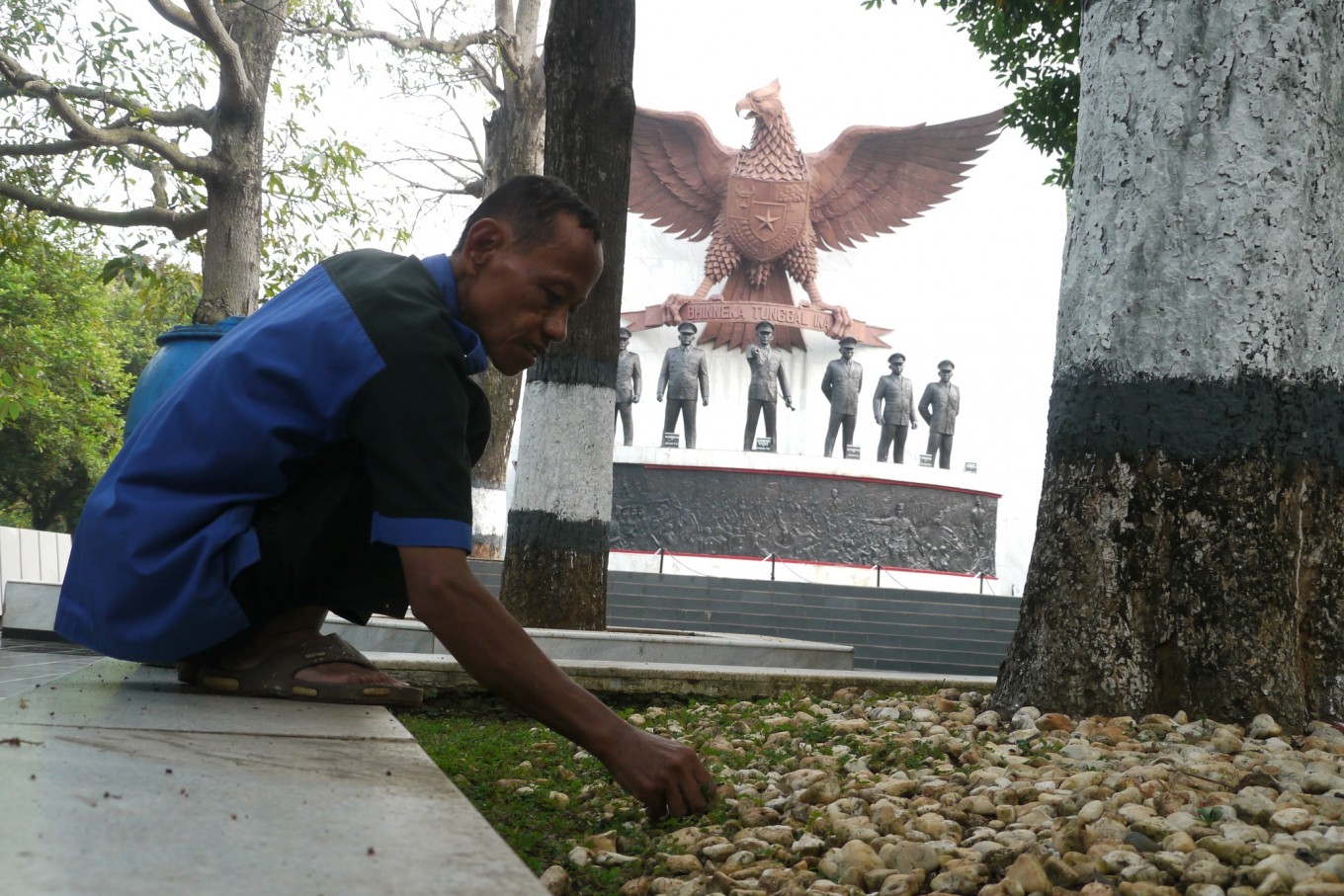Popular Reads
Top Results
Can't find what you're looking for?
View all search resultsPopular Reads
Top Results
Can't find what you're looking for?
View all search resultsIndonesia’s polarized press before the 1965 putsch
A formidable PKI and a fervently non-communist Indonesian Army were the two power camps competing to exert their influence and gain the favor of Sukarno, the country’s president since he proclaimed Indonesia’s independence in 1945.
Change text size
Gift Premium Articles
to Anyone
“BPS=Sukarnoism to kill Sukarnoism and Sukarno”. The castigating line in English appeared on the electronic board of the Senayan Indoor Stadium in Jakarta Feb. 23, 1965. The event was the 19th anniversary of the Association of Indonesian Journalists (PWI). Its commemoration was the prelude to the failed putsch attempt later in the year of the Sept. 30 movement blamed on the Indonesian Communist Party (PKI).
At issue in the Senayan gathering was the clash in ideology between non-communist newspapers and communist-oriented dailies that painted the political landscape in Indonesia from 1964 to 1965, the latter years of the Sukarno presidency.
A formidable PKI and a fervently non-communist Indonesian Army were the two power camps competing to exert their influence and gain the favor of Sukarno, the country’s president since he proclaimed Indonesia’s independence in 1945. This PKI-Sukarno-Army trilateral power play only needed a trigger for a game-changing political explosion.
The battle of the minds also filtered down to the media sector.
Polarization of the press business was caused by two events in 1964, according to Tribuana Said in a 1983 book Indonesia’s BPS Press Fight Against PKI Movement.
First, on May 8, 1964 president Sukarno with PKI coaxing ordered the banning of the Cultural Manifesto, a group of non-communist literary writers who sought freedom of expression not serving political ends. They distinguished themselves from the pro-PKI writers in Lekra, the People’s Cultural Institute, who used political rhetoric in their work.
“The Political Manifesto of the Republic of Indonesia as the illuminator of the Pancasila has become the broadlines of the state and any other manifesto accompanying it would be out of the question,” the banning order stated.
Pancasila is Indonesia’s five tenets of national ideology with belief in the one and only God as the first principle.
The second development was the forming of the Action Committee to Boycott American Films (PABFIAS) sponsored by the PKI-controlled National Front. PABFIAS actions spread to attacks on United States libraries and cultural centers and a call for the expulsion of American Peace Corps volunteers.
Editorial polemics over ideology also featured between non-communist papers like Merdeka (Freedom) and Harian Rakjat (People’s Daily), PKI’s official organ. One issue was their respective interpretation of Sukarnoism.
On Sept. 1, 1964, anticommunist press outlets concerned with the rise of communist influence, established the Body for the Upholding of Sukarnosim (BPS). Its stated aim was to “enhance and popularize Sukarnoism through the press, radio and television”. Its name was a pretext to counter PKI actions, Tribuana, then chief editor of the Medan-based Waspada daily and a BPS activist, acknowledged in a September 2020 interview.
Again, with communist cajoling, president Sukarno on Dec. 17, 1964 outlawed BPS stating that the organization fostered “disunity among revolutionary, progressive national forces”. PKI and its allies wanted to draw blood.
The communist-oriented leadership of the PWI expelled 12 BPS-linked members including BPS chair and Berita Indonesia chief editor Soemantoro. More expulsions were to follow. The Antara news agency, whose chief editor was a PKI confidante, forced the early retirement of nine journalists and a manager.
The day after PWI’s 19th anniversary reception, Information Minister Achmadi withdrew the publication license of 11 BPS-affiliated papers in Jakarta and nine in Medan, North Sumatra. More closures followed in Bandung, Semarang and Surabaya.
The political clock was ticking quickly. PKI intensified its propaganda. Aidit said in a speech Sept. 13, 1965 in West Kalimantan reported by Antara that “PKI can play a role as a forerunner in enhancing a revolutionary situation up to the summit.”
In the pre-dawn hours of Oct. 1 Aidit pulled the trigger.
Aidit’s putsch attempt failed due to poor coordination between the field action units. Within 12 hours, the army under Maj. Gen. Soeharto got the upper-hand and began to dismember the PKI and its mass organizations.
In the media sector, the Army shut down all papers except for the dailies the military ran, Berita Yudha (War News) and Angkatan Bersenjata (Armed Forces). Noncommunist papers were allowed to run again. Out of a total 163 papers at the time, 46 were banned. This included Harian Rakjat and all left-wing publications (Atmakusumah. Kebebasan Pers dan Arus Informasi di Indonesia,1981).
At the PWI, the tables were turned. At a congress held in Jakarta Nov. 4-7, 1965, general chair Karim D.P. and secretary general Satyagraha were ousted. Mahbub Djunaidi of the Muslim paper Duta Masjarakat became general chair and Jakob Oetama of Kompas daily the secretary general.
The trials the Indonesian press went through prior, during and after the Sept. 30 movement affair is not thoroughly documented. Tribuana, now 80, did a commendable job on writing about the BPS.
Across the dividing line, Martin Aleida, then a 21-year-old reporter at Harian Rakjat, gives an inside look on newsroom intrigue of the communist daily in his 2020 memoir Romantisme Tahun Kekerasan (Romanticisim in the Years of Violence).
In an interview, Goenawan Mohamad, a signatory to the Cultural Manifesto who later became the founding chief editor in 1971 of the weekly newsmagazine Tempo, affirms the historical importance of the Indonesian press in the 1964-66 period but little has been written about it.
“There are fewer and fewer witnesses from that period,” Goenawan, now 79, lamented.
***
The writer is journalism instructor at Dr Soetomo Press Institute.










